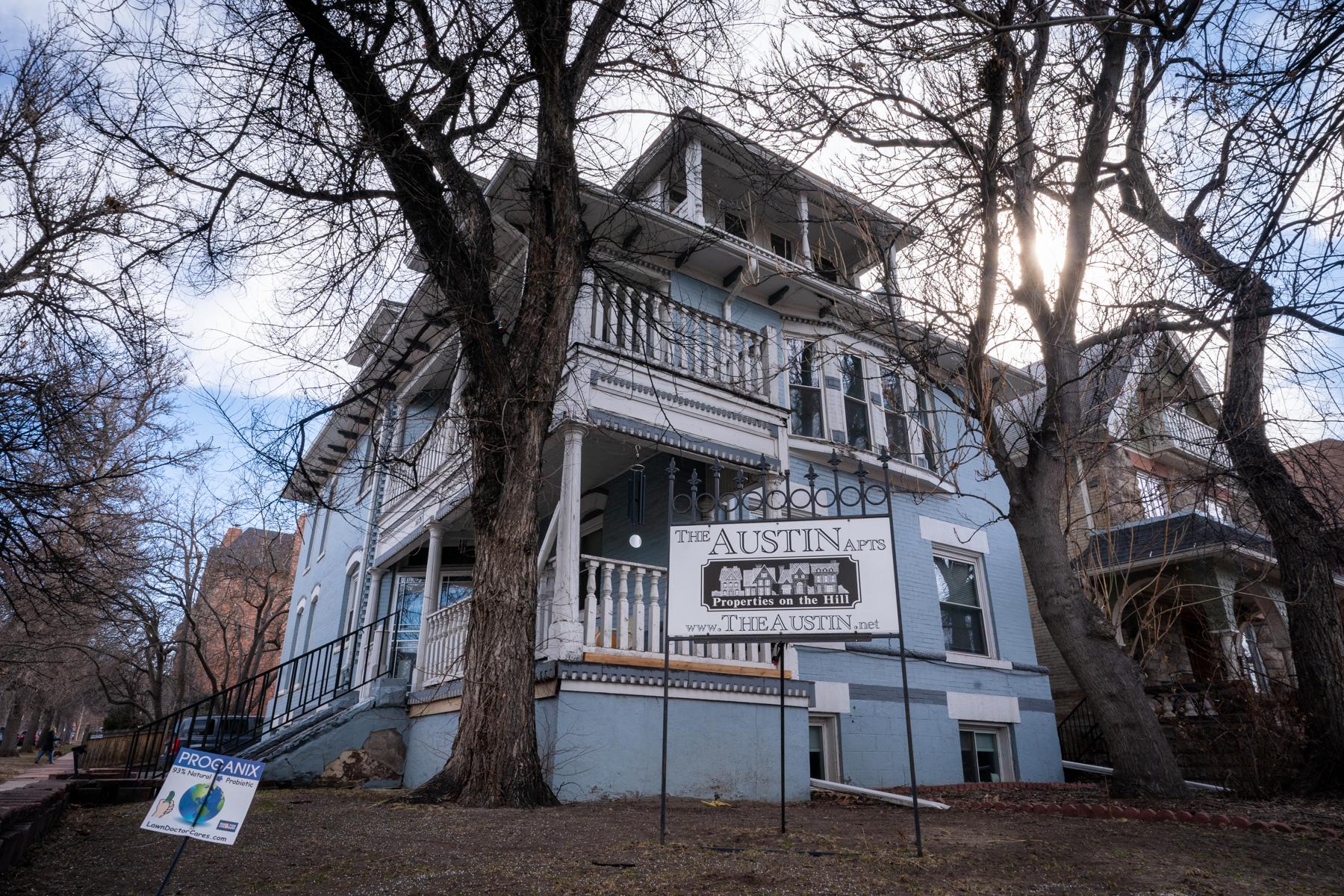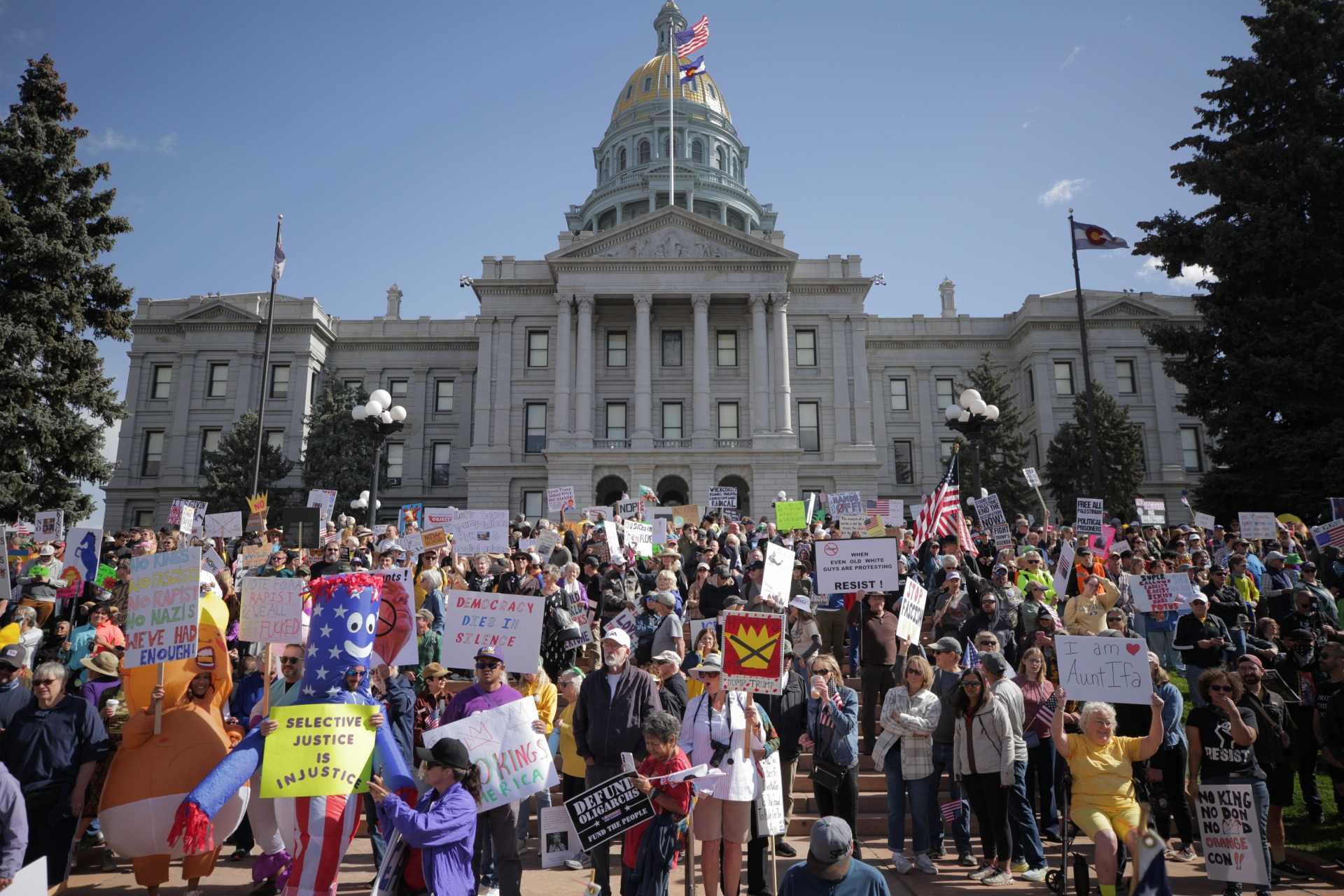
Democrats in Colorado have proposed a significant change to the state’s property tax system. Gov. Jared Polis and other leaders want to lower tax rates for residential, commercial and other properties over the next ten years. That would defray some of the rising tax bills that are coming next year because of the state’s hot property market.
The proposal is currently being debated by the state legislature. But it ultimately would have to go before the public — in the form of a ballot question called Proposition HH — and win approval from Colorado voters this November.
The bill comes with some tradeoffs for Coloradans. The typical homeowner could save hundreds of dollars per year or more, compared to the current state of things. But the measure also could reduce TABOR tax refunds by tens or hundreds of dollars per person — depending on their income — in the years ahead.
How are property taxes calculated?
Property taxes are determined by a formula that includes a home’s estimated value multiplied by a statewide “assessment rate” as well as local tax rates, which are also known as mill levies. (The state has a more detailed explanation of this formula here)
This year’s valuation update is set to drive those bills significantly higher for many homeowners — with the typical hike ranging from 20 percent to more than 30 percent statewide.
How would Proposition HH affect property owners?
These changes would be in effect for 10 years, starting in tax year 2023 — for which taxes are due early in 2024 — and continuing through tax year 2032. The mechanics are complicated, but the results are straightforward: Property tax bills would still rise, but not as fast.
Compared to the baseline, the changes would save homeowners hundreds of dollars per year for a decade. The savings will differ depending on home value and local tax rates.
| Value of property | Tax year 2023 savings | Average yearly savings, tax years 2023 through 2032 |
| $500,000 | $165 | $378 per year, a reduction of 12.9% of total taxes |
| $1,000,000 | $192 | $541 per year, a reduction of 9.2% of total taxes |
| $2,000,000 | $246 | $869 per year, a reduction of 7.4% of total taxes |
Note: The above figures are for owner-occupied homes and multifamily properties. Owners of second homes and single-family rentals would owe higher taxes. These figures are based on the state’s average local tax rate of 83 mills, but your mileage may vary. (Check your local county assessor’s office for the mill levy at your address.)
People with higher home values will get a larger discount in terms of actual dollars, since they pay higher property tax bills. But because of the design of the proposal, the discount would have a larger proportional impact on less expensive properties.
And keep in mind, those “savings” are compared to what would happen under current law. People’s actual tax bills will likely still increase as property values rise.
The bill gives favorable treatment to homes that are occupied by their owners, as well as to multifamily buildings. If you own a second home or rent out your single-family home, you’ll only get about half of those savings.
The bill also includes savings for commercial and agricultural properties. More on that below.
What would Prop. HH do to TABOR refunds?
When you lower property tax rates, that means comparatively less money for local governments, including schools. As part of this proposal, the state would make up some of the difference — covering about two-thirds of the bill’s effects on local governments and schools.
So, how would the state do that? With money that otherwise would be given back to taxpayers through TABOR refunds. The proposition allows the state to keep more tax money each year.
Here’s how different income groups would be affected over the initial few years.
For tax year 2023 refunds, which are paid in 2024, the measure would "flatten" TABOR refunds. Normally, people who paid more income taxes get a bigger refund. That means everyone would receive an equal refund, estimated at $661, for this year only. That's a gain of up to $200 for people making less than $100,000 -- and a loss that could range up to nearly $1,000 for the wealthiest people. When you put it all together, the total paid out would still shrink under Prop. HH.
But the flattening would last only one year. In future years, everyone would see a reduction.
| Household income tier | Projected average refund reduction, tax years 2024 and 2025 |
| Up to $54,000 | $50 per year, a reduction of 15% |
| $54,001 to $106,000 | $66 per year, a reduction of 15% |
| $106,001 to $168,000 | $77 per year, a reduction of 15% |
| $168,001 to $233,000 | $91 per year, a reduction of 15% |
| $233,001 to $299,000 | $97 per year, a reduction of 15% |
| $299,001 and up | $156 per year, a reduction of 15% |
Refund projections were only available through tax year 2025. That means it’s impossible to estimate the effects Prop. HH could have on individual refunds over its decade-long duration.
But we do know the overall impact could grow significantly in the future. The proposition would affect $167 million of refund money in its first year, a relatively small fraction of the current refund total.
By the end of the decade, the rising cap could allow the state to keep up to about $2.2 billion in revenues per year, assuming the economy continues to grow. That would be enough to significantly reduce refunds, compared to their size in recent years. If revenues do not exceed the new Prop. HH cap, then no refunds would be given.
| Fiscal year | Maximum reduction of yearly refunds due to Prop. HH cap |
| 2023-'24 | $167M |
| 2024-'25 | $359M |
| 2025-'26 | $570M |
| 2026-'27 | $795M |
| 2027-'28 | $1.04B |
| 2028-'29 | $1.31B |
| 2029-'30 | $1.59B |
| 2030-'31 | $1.89B |
| 2031-'32 | $2.22B |
Under the proposition, extra money that is kept by the state government but isn’t needed for replacing property taxes would be directed to the State Education Fund. (The state's authority to retain the extra revenue would disappear if property tax relief is not continued past 2032.)
Conservatives have criticized this approach, with Republican Sen. Barbara Kirkmeyer calling it a “shell game.” She asked on Tuesday: “Why do we have to say to voters, 'You’re not going to get property tax relief unless you give up your TABOR refund?’”
Democrats defended the change, saying that it would have a relatively small effect on refunds while helping to defuse much larger leaps in property taxes.
How would Prop. HH change property tax rates?
The measure has a few ways to slow the property tax increase over the next decade, starting with some smaller changes. It knocks $40,000 off the taxable value of residential properties, and it also lowers the assessment rate for most properties to 6.7 percent for tax years 2023 and 2024.
The change builds on earlier discounts that are already in effect this year. Current law makes a $15,000 deduction and sets the assessment rate at roughly 6.8 to 7 percent for residential properties in 2023 and 2024, but that’s set to rise to 7.15 percent with no valuation discount for future years.
And the measure could also offer further benefits to homeowners in the long term. It encourages cities to lower their local tax rates when tax bills are growing faster than inflation — although they will still have the power to collect more if they choose.
Altogether, the new proposal would reduce property tax collections by an estimated $263 million in tax year 2023, $788 million in tax year 2024, and by more than $900 million in tax year 2025.
Bigger impacts for primary residences and older homeowners.
Instead of treating all homes the same, the proposed state law would make a distinction between owner-occupied homes and those that are not the primary residences of their owners, a change from the current tax system.
Owner-occupied homes and multifamily buildings would get the lower assessment rate — 6.7 percent — and lower valuation base — the $40,000 discount — throughout the entire 10-year period of the law.
Meanwhile, people who keep single-family homes as rental properties or second homes would not get as big of a discount for tax years 2025 through 2032. They would not get a valuation discount for those years; for a $500,000 property, that means they would miss out on a couple hundred dollars of yearly savings.
The bill would also expand the Senior Homestead Property Tax Exemption, which offers a discount for people 65 and older who have lived in their home for at least a decade. The exemption is being expanded from a maximum valuation discount of $100,000 to a maximum of $140,000. The same senior discount could also now be transferred to new homes, allowing someone to downsize without losing their tax benefit.
“We have long sought a permanent way to create portability [for the senior exemption],” said Sen. Chris Hansen, a sponsor of the bill.
Here’s how bills might look in tax year 2025:
Total 2025 taxes for a $500,000 property with 83 mills of taxes | |
| All residential property if law isn’t changed | $2,967 |
| Home with Senior Homestead Property Tax Exemption if Prop. HH passes | $2,002 |
| Owner-occupied home if Prop. HH passes | $2,558 |
| Multifamily property if Prop. HH passes | $2,558 |
| Non-owner occupied single-family home if Prop. HH passes | $2,781 |
That kind of distinction between owner-occupied homes and other properties is new in Colorado, though not nationally. It means that homeowners would have to submit paperwork to their counties, saying whether or not they’re the primary resident of a property.
The idea has drawn objections from some real-estate interests and county officials.
“Every single property owner in the state must file an application seeking a primary residence designation,” said Brian Tanner, vice president of public policy for the Colorado Association of Realtors, at a committee hearing. “And you are asking assessors to now verify classification status of every property owner in the state.”
Hansen said the idea was to help people who are facing higher costs for their primary residence.
“The differentiation here is to really target the relief on the folks that we think need it the most, which is the owner-occupied units,” he said.
What about commercial properties and others?
Commercial properties, farmland and land used for renewable energy generation all get their own discounts on their bill. Because of the complex history of Colorado property tax law, these types of land are taxed at much higher rates than residential property. They would still be taxed at higher rates, but would get a discount of about 4 to 7 percent on their tax bills, depending on the year, compared to current law.
Questions and comments? Email the reporter.
Editor's note: This article was updated with additional information on May 4, 2023 and on May 18, 2023 to reflect changes made to the proposal.








